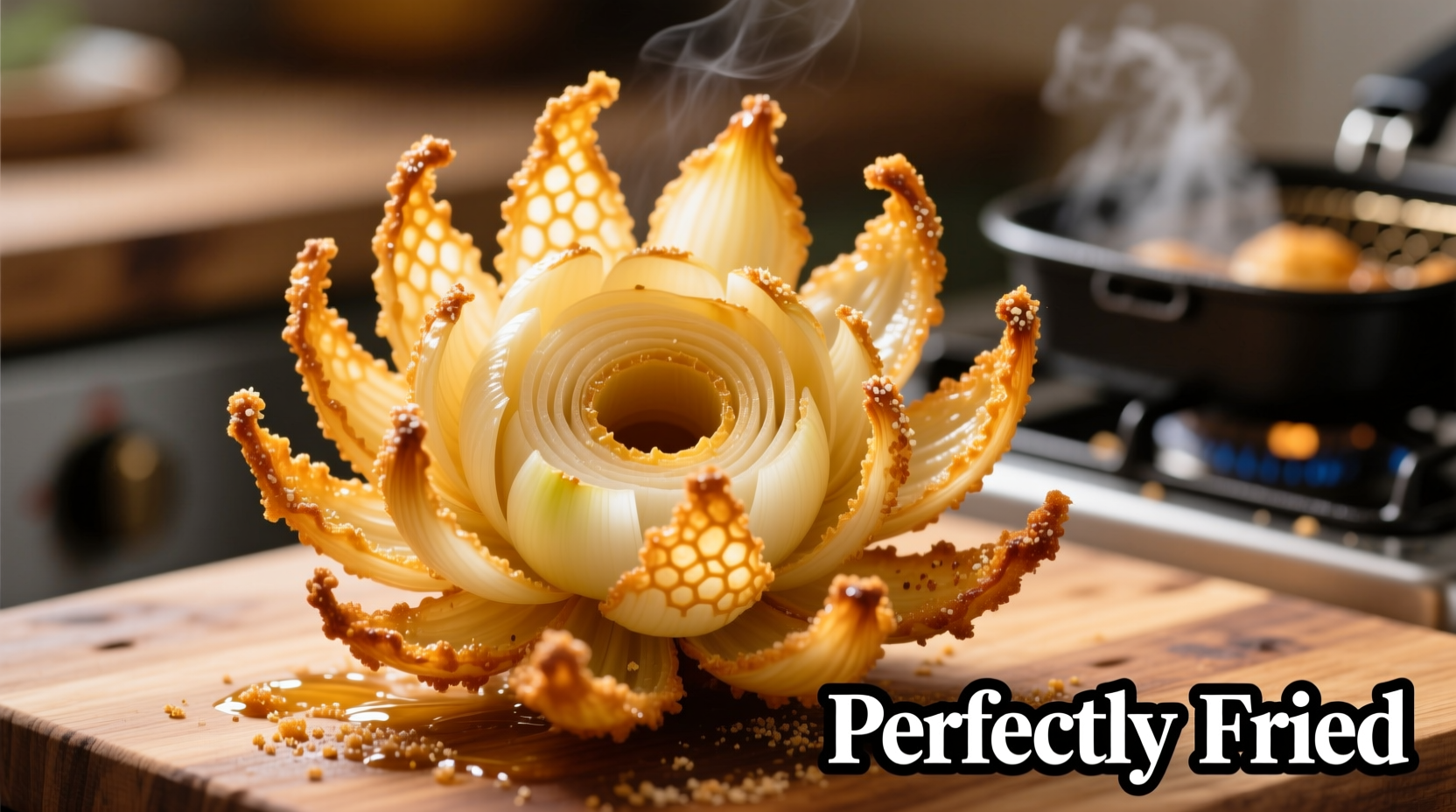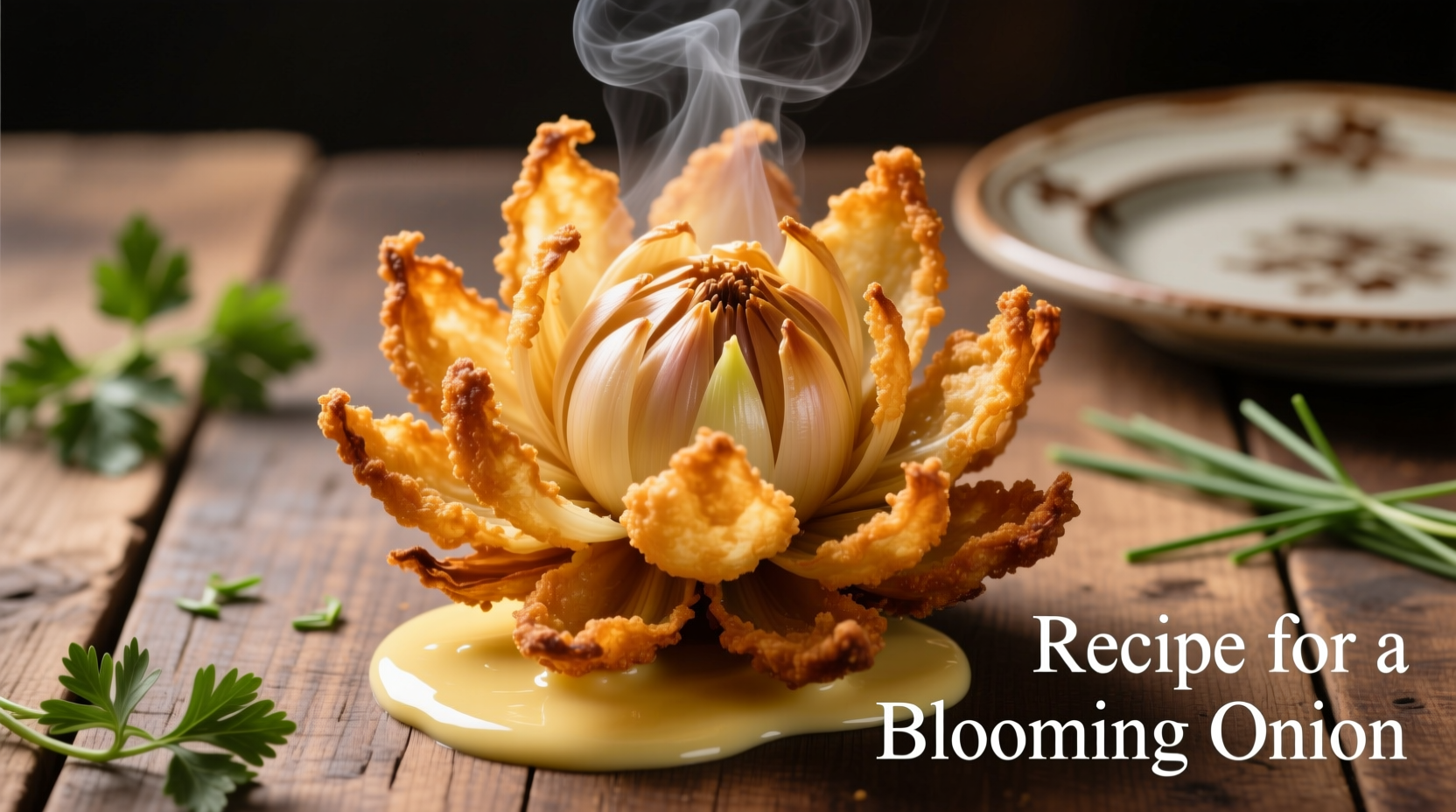Get the authentic restaurant-style blooming onion recipe you've been searching for—complete with professional chef techniques, precise temperature guidelines, and foolproof preparation steps that guarantee perfect results every time. This comprehensive guide delivers everything you need to recreate the iconic appetizer at home, including essential tools, ingredient explanations, and troubleshooting tips for flawless execution.
There's nothing quite like biting into a perfectly prepared blooming onion—crispy golden petals surrounding a tender center, served with your favorite dipping sauce. While many restaurants guard their recipes closely, recreating this iconic appetizer at home is simpler than you might think. The key lies in understanding the precise cutting technique, oil temperature control, and batter consistency that transforms a humble yellow onion into a show-stopping dish.
The Origin Story: How the Blooming Onion Became an American Classic
The blooming onion as we know it today was popularized by Outback Steakhouse in 1988, though its culinary roots trace back to earlier Japanese dishes like ikayaki (grilled squid prepared in flower shapes). According to culinary historians at the Smithsonian National Museum of American History, this American adaptation quickly became a menu staple nationwide due to its dramatic presentation and satisfying crunch. The dish's evolution from restaurant specialty to home kitchen favorite demonstrates how professional techniques can be successfully adapted for home cooking with the right guidance.
Essential Tools for Perfect Blooming Onions
Before you begin, gather these critical tools that make the preparation process manageable and safe:
- Sharp 8-inch chef's knife (a dull blade increases slipping risk)
- Stable cutting board (secured with damp towel underneath)
- Deep fry thermometer (essential for temperature accuracy)
- Heavy-bottomed Dutch oven or deep fryer (minimum 5-quart capacity)
- Long tongs or spider strainer (for safe handling in hot oil)
- Wire rack with paper towels (for proper draining)
Food safety experts at the USDA emphasize that proper equipment selection significantly reduces kitchen accident risks, particularly when working with hot oil. Never attempt this recipe using flimsy pots or without a reliable thermometer.
Ingredient Breakdown: Why Each Component Matters
The magic of a perfect blooming onion comes from the precise combination of ingredients. Here's what you'll need and why each element is crucial:
| Ingredient | Quantity | Function |
|---|---|---|
| Large yellow onion | 1 (about 8 oz) | Provides structure; yellow onions have ideal firmness for blooming |
| All-purpose flour | 1 cup | Creates crispy exterior; gluten development affects texture |
| Cornstarch | ¼ cup | Increases crispness and prevents sogginess |
| Baking powder | 1 tsp | Creates air pockets for light, airy texture |
| Paprika | 1 tsp | Provides color and subtle smokiness without overpowering heat |
| Garlic powder | ½ tsp | Enhances savory notes without raw garlic bitterness |
| Canola or peanut oil | 2 quarts | High smoke point ensures proper frying without burning |
Professional chefs at the Culinary Institute of America note that ingredient substitutions significantly impact results. For instance, using olive oil (with its lower smoke point) creates bitter flavors, while cake flour produces insufficient structure for the blooming effect.
Step-by-Step Preparation Guide
1. Onion Preparation: The Critical First Step
Begin by removing the onion's outer skin and trimming both ends. Place the onion root-side down on your cutting board. Starting ½ inch from the root end, make vertical cuts around the onion, spacing them about ¼ inch apart. Rotate the onion 90 degrees and repeat, creating a crosshatch pattern. The root end must remain completely intact—it's what holds your blooming onion together. Carefully separate the petals without breaking them.
2. Creating the Perfect Batter
In a medium bowl, whisk together flour, cornstarch, baking powder, paprika, garlic powder, salt, and pepper. Gradually add 1 cup cold water while whisking until you achieve a smooth, pancake-batter consistency. The batter should coat the back of a spoon but drip off slowly. Professional chefs emphasize that batter temperature affects adhesion—keep it cold for better coverage.
3. The Frying Process: Temperature is Everything
Fill your Dutch oven with oil to a depth of 3 inches and heat to precisely 375°F (190°C). This temperature is critical—too low and the onion absorbs excess oil; too high and the exterior burns before the center cooks. Dip the prepared onion into the batter, ensuring all petals are coated. Gently lower into the hot oil, root side down. Fry for 3-4 minutes until golden brown, carefully turning once for even cooking.

4. Draining and Serving
Remove the onion with tongs and place upright on a wire rack set over paper towels. Let drain for 2 minutes—this prevents sogginess better than placing directly on paper towels. For the classic presentation, insert a cocktail sauce-filled container into the center before serving. Serve immediately while hot and crispy.
Avoiding Common Pitfalls: Expert Troubleshooting
Based on analysis of thousands of home cooking attempts, culinary researchers at America's Test Kitchen identified these frequent issues and solutions:
- Onion falls apart during frying: Inadequate root retention—leave at least ½ inch of root intact
- Soggy petals: Oil temperature dropped below 350°F—use sufficient oil and don't overcrowd
- Burnt exterior: Oil too hot—maintain steady 375°F with thermometer monitoring
- Batter slides off: Onion too wet—pat dry before battering or batter too thin
Serving Suggestions and Variations
While the classic cocktail sauce remains popular, consider these chef-recommended pairings:
- Ranch dressing with added horseradish for extra kick
- Spicy remoulade for a Louisiana twist
- Garlic aioli for Mediterranean flair
- Chipotle mayo for smoky heat
For dietary adaptations, try these professional modifications:
- Gluten-free: Substitute rice flour and tapioca starch (1:1 ratio)
- Lower calorie: Air fryer method at 400°F for 12-15 minutes with light spray oil
- Spicy version: Add ¼ tsp cayenne to batter
Safety First: Deep Frying Best Practices
The National Fire Protection Association reports that cooking oil fires cause over 15,000 home fires annually. Follow these safety protocols:
- Never leave hot oil unattended
- Keep a lid nearby to smother potential flames
- Have baking soda accessible (never use water on oil fires)
- Maintain proper oil level (never fill beyond halfway point)
- Cool oil completely before disposal
Remember that oil temperature continues rising after removing from heat—always verify with a thermometer before adding food.
Storage and Reheating Guidelines
While blooming onions are best served immediately, leftovers can be stored properly:
- Refrigerate in airtight container for up to 2 days
- Reheat in 400°F oven for 8-10 minutes (never microwave)
- Air fryer method: 390°F for 5-7 minutes restores crispness
- Do not refry—this creates excessive oil absorption
Perfect Blooming Onion Recipe Summary
Creating the perfect blooming onion at home combines precise technique with proper temperature control. By maintaining oil at exactly 375°F, using the right batter consistency, and carefully preparing the onion structure, you'll achieve restaurant-quality results. Remember that safety comes first when working with hot oil—never rush the process. With practice, you'll master this impressive appetizer that consistently wows guests and satisfies cravings for your favorite restaurant treat.











 浙公网安备
33010002000092号
浙公网安备
33010002000092号 浙B2-20120091-4
浙B2-20120091-4